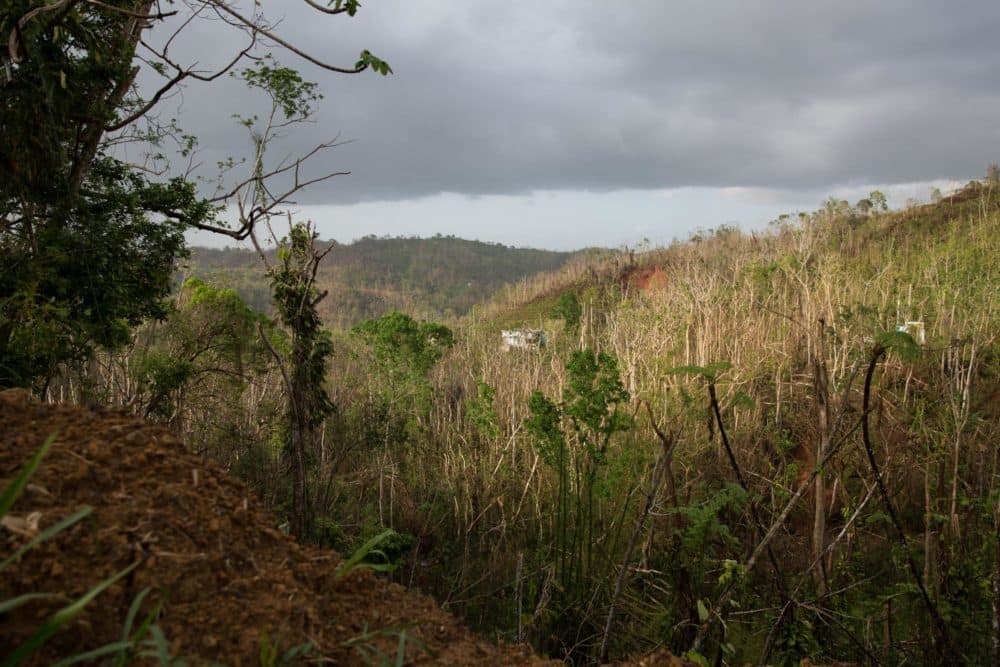Advertisement
Hurricanes Yield 'Fundamental Change' In Puerto Rico's Watershed
Resume
Researchers in Puerto Rico say hurricanes Irma and María made long-lasting and ongoing changes to forest and coastal ecosystems.
For decades, researchers have been studying the rainforest of Puerto Rico’s Luquillo Mountains.
Post Irma and María, researchers took a closer look at what’s flowing through the waters there, taking stream chemistry readings every 15 minutes. The goal was to understand how the storms changed what’s pouring into the water and how that’s affecting the forest and the coast.
“We have a complete switch in the behavior of nitrate after these major hurricanes pass through our study site,” said Bill McDowell, a professor at the University of New Hampshire, who works on the project.
McDowell said a lot of those nitrates, which are essential for plant growth, came from downed leaves and branches. That helped lead to more nitrate in the water and less in the forest.
“We can think of it as a fundamental change in the way materials are moving through the system. And the control mechanisms that kept nitrate concentration relatively stable in the past, have been disrupted or destroyed by the hurricanes,” McDowell said.
McDowell said the next step is to monitor how those nitrogen losses impact forest recovery and whether more nitrogen flowing into coastal waters will cause die-offs of coral and other sea life.
The research was presented at the fall meeting of the American Geophysical Union.
This story originally ran on Connecticut Public Radio's website.
This segment aired on December 12, 2018.